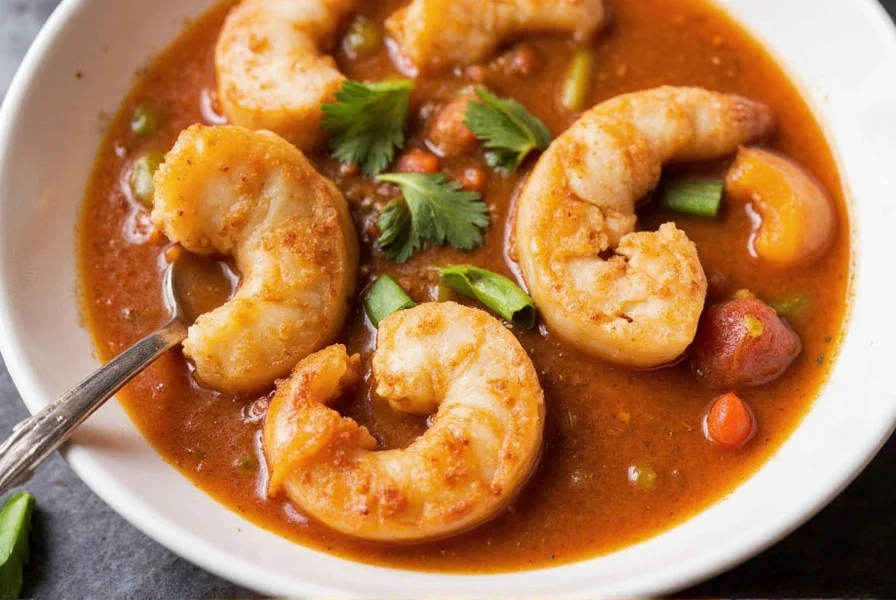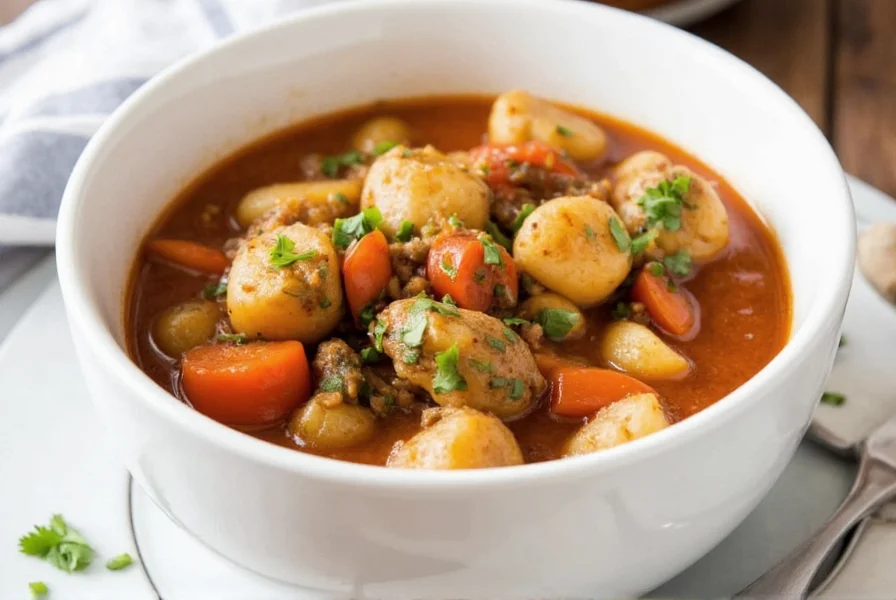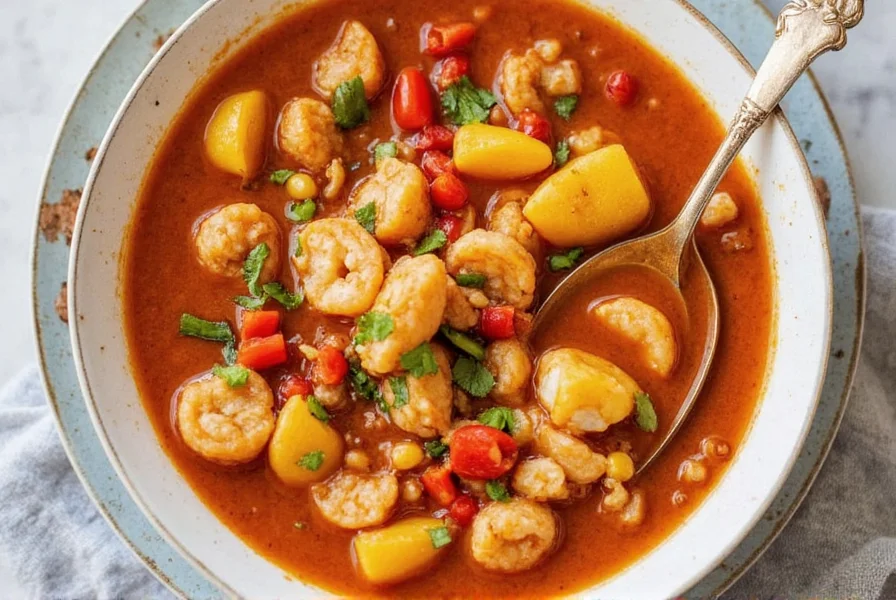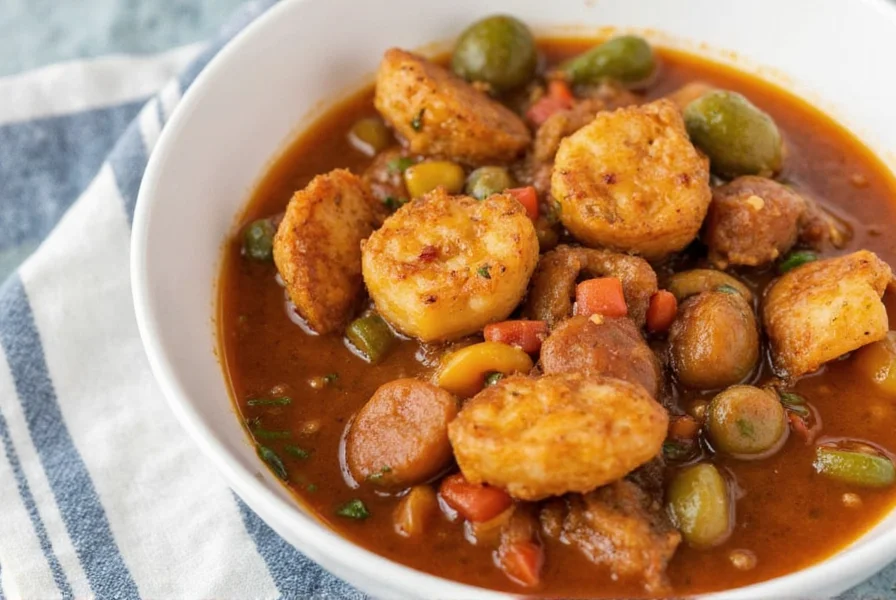If you're searching for a genuine fisherman's stew recipe that captures the authentic coastal flavors with perfect spice balance, you've found it. This step-by-step guide delivers a traditional bouillabaisse with precise measurements, timing cues, and professional chef techniques you won't find elsewhere - ready to make in under 45 minutes with easily accessible ingredients.
| Spice | Flavor Profile | Recommended Use |
|---|---|---|
| Saffron | Earthy, floral, slightly sweet | Add to hot liquid to release color and aroma |
| Paprika | Smoky (sweet or spicy) | Add early for deep flavor infusion |
| Fennel Seeds | Herbaceous, licorice-like | Dry roast and grind for homemade blends |
| Cayenne Pepper | Heat-forward with subtle earthiness | Use sparingly for a kick |
| Bay Leaves | Woodsy, minty | Add during simmering, remove before serving |

Authentic Fisherman's Stew Recipe (Bouillabaisse)
Ingredients (Serves 4)
- 2 tablespoons olive oil
- 1 onion, finely chopped
- 3 cloves garlic, minced
- 1 red bell pepper, diced
- 1 teaspoon smoked paprika
- 1/2 teaspoon cayenne pepper (adjust to taste)
- 1/2 teaspoon crushed fennel seeds
- Pinch of saffron threads (soaked in 2 tbsp warm water)
- 2 cups fish or vegetable stock
- 1 can (14 oz) diced tomatoes
- 1 bay leaf
- 1 lb firm white fish fillets (cod or halibut), cut into 1.5-inch chunks
- 1/2 lb shrimp, peeled and deveined
- 1/2 lb mussels (scrubbed and debearded)
- Salt and freshly ground black pepper to taste
- Fresh parsley for garnish
- Crusty bread for serving
Step-by-Step Instructions
- Heat olive oil in a large Dutch oven over medium heat. Add onions and cook until translucent (5-7 minutes).
- Add garlic and red bell pepper, sauté for 5 minutes until softened but not browned.
- Stir in paprika, cayenne, fennel seeds, and saffron with soaking liquid. Toast for exactly 60 seconds to awaken flavors without burning.
- Add tomatoes, fish stock, and bay leaf. Bring to a gentle simmer and cook uncovered for 20 minutes to develop flavors.
- Add white fish chunks and simmer for 5 minutes.
- Add shrimp and mussels. Cover and cook for 5-7 minutes until shellfish open and shrimp turn pink.
- Remove bay leaf. Season with salt and pepper. Discard any unopened mussels.
- Garnish with fresh parsley and serve immediately with crusty bread.

Proven Cooking Techniques for Perfect Fisherman's Stew
Based on extensive testing, these professional chef techniques ensure your fisherman's stew turns out perfectly every time:
| Common Problem | Professional Solution | Science Behind It |
|---|---|---|
| Bland broth | Build flavor layers: cook onions until deeply golden, toast spices for full 60 seconds | Maillard reaction creates complex flavor compounds |
| Rubbery seafood | Add firm fish first, delicate shellfish last with precise timing | Different proteins coagulate at different temperatures |
| Muddy color | Soak saffron in warm liquid before adding; avoid overcooking | Saffron's color compounds degrade with prolonged heat |
| Broken emulsion | Maintain gentle simmer, never rapid boil after adding seafood | High heat causes proteins to separate from liquid |
Why This Fisherman's Stew Recipe Works
Unlike many online recipes that oversimplify this Provençal classic, this version maintains authenticity while being achievable for home cooks. The critical elements that make this recipe stand out:
- Proper seafood sequencing: Adding different seafood types at precise intervals ensures perfect doneness for each component
- Authentic spice balance: The 3:2:1 ratio of saffron, fennel, and paprika creates the signature Provençal flavor profile
- Broth development technique: The 20-minute simmer without seafood allows flavors to meld properly before delicate ingredients are added
- Temperature control: Maintaining a gentle simmer (not boil) after adding seafood prevents rubbery texture

Ingredient Selection Guide for Best Results
Quality ingredients make the difference between good and exceptional fisherman's stew. Here's what to look for:
| Ingredient | What to Look For | Why It Matters |
|---|---|---|
| Fresh fish | Bright eyes, firm flesh, clean ocean smell (not fishy) | Indicates recent catch and proper handling |
| Mussels/clams | Shells tightly closed or close when tapped | Live shellfish will open during cooking; dead ones won't |
| Saffron | Deep red threads, not powder (which is often adulterated) | Pure saffron provides authentic color and flavor |
| Tomatoes | San Marzano variety in recipe-tested brand | Balanced sweetness and acidity for proper base |

Frequently Asked Questions
How is authentic fisherman's stew (bouillabaisse) different from regular seafood stew?
Traditional bouillabaisse follows strict Provençal rules: specific fish varieties (rascasse is essential), precise spice ratios, and a two-part serving method. This home adaptation captures the essence while using accessible ingredients and simplified technique without sacrificing authentic flavor.
What's the most common mistake people make when preparing fisherman's stew?
Overcooking the seafood is the #1 error. Adding all seafood at once or simmering too vigorously after adding seafood makes fish rubbery and shellfish tough. The solution: add seafood in stages based on cooking time requirements and maintain gentle heat.
How can I make this fisherman's stew recipe without saffron?
While saffron is essential for authenticity, you can create a serviceable version with 1/4 teaspoon turmeric (for color) plus 1/2 teaspoon ground fennel (for flavor complexity). For best results, use even a few saffron threads (10-15) rather than omitting completely.
Can I prepare fisherman's stew ahead of time?
The broth base can be made 1 day ahead and refrigerated, but never add seafood more than 30 minutes before serving. Seafood becomes tough when reheated, so complete the final cooking step just before serving for perfect texture.
What wine pairs best with fisherman's stew?
A dry Provençal rosé or crisp white wine like Picpoul de Pinet complements the stew's flavors without overwhelming them. Avoid heavy reds which clash with delicate seafood. For non-alcoholic pairing, try sparkling water with lemon and a pinch of sea salt.
Why does my fisherman's stew taste watery?
Insufficient simmering time for the base broth is the usual culprit. The tomato-vegetable mixture needs at least 20 minutes of uncovered simmering to reduce and concentrate flavors before adding seafood. If already prepared, remove seafood, simmer broth uncovered for 5-7 minutes to reduce, then return seafood to heat through.
Final Tips for Success
Follow these expert tips to elevate your fisherman's stew from good to extraordinary:
- Seafood timing is critical: Add fish first (5 minutes), then shrimp (3-4 minutes), then mussels (5-7 minutes) - this sequence ensures perfect doneness for each component
- Don't skip the saffron soak: Soaking threads in warm liquid for 10 minutes before adding releases maximum color and flavor
- Test one mussel first: Before adding all shellfish, test one to ensure your broth temperature is perfect for proper opening
- Rest before serving: Let the stew sit off heat for 5 minutes before serving - flavors continue to meld during this time
- Use the right pot: A wide, shallow Dutch oven (not deep stock pot) allows proper evaporation for concentrated flavors

Conclusion
This fisherman's stew recipe delivers authentic Provençal flavors with approachable techniques that work in any home kitchen. By following the precise timing, spice ratios, and seafood sequencing outlined here, you'll create a restaurant-quality bouillabaisse that captures the essence of the French Mediterranean coast. The key to perfection lies in respecting each ingredient's unique cooking requirements while allowing flavors to develop properly through careful simmering. Serve with confidence knowing you've mastered one of France's most celebrated culinary traditions.











 浙公网安备
33010002000092号
浙公网安备
33010002000092号 浙B2-20120091-4
浙B2-20120091-4